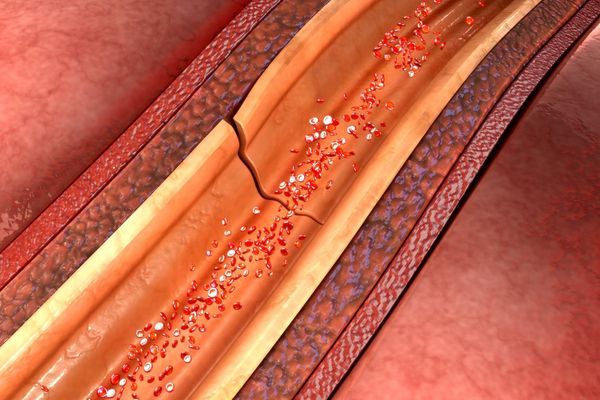This article has been archived. We will no longer be updating it. For our most up-to-date information, please visit our heart health information here.
As the month of February ends, I can't help but think that it's important to squeeze in just one more article about heart health.
That's because heart disease is the number one killer of women, and we're all at risk, especially as we age. Yes, I know, most of us worry about breast cancer (and this doesn't mean you shouldn't), but in fact, heart disease is much more common. If you don't already know that, don't feel badly—only about half of women are aware of that fact, according to the Centers for Disease Control and Prevention (CDC).
Reports the American Heart Association: "While one in 31 American women dies from breast cancer each year, heart disease is the cause of one out of every three deaths. That's roughly one death each minute."
Do you know What Worries Women About Their Heart Health?
You've likely read about health fixes to keep your heart healthy—things like get plenty of exercise, make sure you get enough sleep (and good quality sleep, at that), eat right, stress less, maintain a healthy weight and don't smoke. Learn more about effectively managing stress for heart health.
Additionally, it's important to keep check on any medical conditions that may put your heart in danger—like high cholesterol, high blood pressure and diabetes.
Find out how to Take Charge of Your Heart Health.
But there are also small tweaks you can make around the house—literal "lifestyle" changes—to lessen your risk of heart disease:
1. In the bathroom: Brush and floss your teeth.
There's research that shows a link between heart disease and periodontal (aka, gum) disease, which can strike when there's excess plaque (a type of bacteria) buildup that can lead to infection and inflammation. That excess bacteria can cling to the walls of your arteries and contribute to obstruction-causing clots. Experts at Harvard say that people with gum disease have two to three times the risk of having a heart attack, stroke or other serious cardiovascular event. Although there's not a direct association, there are shared risk factors (like smoking or an unhealthy diet) that lead to the relationship.
Brush twice a day for two minutes, using a fluoride toothpaste, and floss once each day, recommends the American Dental Association.
2. In the bedroom: Have more sex.
Between the emotional benefits of connectedness and of being in a loving relationship (which nurtures your heart by releasing endorphins that in turn, help relieve stress, a contributing factor in heart health), there's scientific proof that sex can help protect your heart. The study, published in The American Journal of Cardiology, found that for men who had sex once a month or less, their risk of developing cardiovascular disease was 50 percent higher than for who had sex twice a week or more. Yes, the study was performed in men but should relate to women, as well (at least we can hope)!
3. In your living room: Tune into your favorite tunes. And while you're at it, laugh.
Music is soothing, yes. And there's no denying it can put you in a good frame of mind. Research from the University of Maryland is on board with this, as it relates to your heart: Its study measured the inner lining of participants' blood vessels and found that the diameter increased by 26 percent after listening to music that "evoked joy." That translates to increased blood flow to the heart (a good thing). On the flip side, when participants listened to music that made them feel "anxious," their blood vessels narrowed. Laughing also has beneficial effects on blood vessel function, another study found.
4. In your kitchen: Stock healthy fats.
You can lower your risk of heart disease by 19 percent by swapping out foods that are high in saturated fats and using those rich in polyunsaturated fats (which can reduce bad cholesterol levels), found researchers from Harvard School of Public Health. What does that mean? Side-step snacking on things like candy and baked goods and substitute heart-healthy foods like walnuts, almonds, pistachios and other nuts or seeds, which are all high in the polys. And when you cook and prep foods, get rid of the solid fats (like butter, shortening, lard and hard stick margarine) and use healthier oils like canola, corn, olive, peanut, safflower, soybean and sunflower, suggests the American Heart Association.
5. In your backyard: Get working.
Lack of exercise is a no-no for the heart and a big risk factor for heart disease. The CDC recommends 150 minutes per week of moderate to intense aerobic activity. But if you can't get this, get something—gardening is a good way to do it. Raking and mowing the lawn (especially with a push-mower instead of an electric one) can get your heart rate up in a good way. Any do-it-yourself project—even vigorous housework—can count toward exercise (as long as you work hard and get out of breath or sweaty!) and help reduce your risk for heart attack and stroke. The good news? Exercise can be spread out and broken up into smaller chunks of time during the day.
Read more:
Heart Disease and Women of Color
Menopause and Your Heart
- 10 Fun Activities to Keep Your Brain Sharp ›
- 3 Steps to Heart-Healthy Cooking ›
- Heart Disease ›
- What Is a Heart-Healthy Diet? - HealthyWomen ›
- 5 Steps to a Heart-Healthy Diet - HealthyWomen ›
- 15 Heart-Healthy Foods You Should Be Eating - HealthyWomen ›






